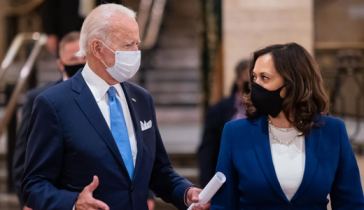With the new Congress comes new priorities that are in large part dictated by the leadership in both the U.S. House of Representatives and the Senate. At the top of the agenda is confronting the COVID-19 pandemic, including passing the $1.9 trillion relief package being proposed by the Biden administration. Here’s a look at what else to expect from the new Congress.
New Congress, New Leadership
Here are the Committee Chairs and Ranking Members of relevance to COVID-19 recovery and the biotechnology sector in general:
U.S. House of Representatives
- House Energy and Commerce Committee
- Rep. Frank Pallone (D-NJ) – Chairman
- Rep. Cathy McMorris-Rodgers (R-WA) – GOP Leader
- House Appropriations Committee
- Rep. Rosa DeLauro (D-CT) – Chair
- Rep. Kay Granger (R-TX) – GOP Leader
- House Ways and Means Committee
- Rep. Richard Neal (D-MA) – Chair
- Rep. Kevin Brady (R-TX) – GOP Leader
- House Judiciary Committee
- Jerry Nadler (D-NY) – Chair
- Jim Jordan (R-OH) – GOP Leader
U.S. Senate
- Senate HELP Committee
- Sen. Patty Murray (D-WA) – Chair
- Sen. Richard Burr (R-NC) – GOP Leader
- Senate Finance Committee
- Sen. Ron Wyden (D-OR) – Chairman
- Sen. Mike Crapo (R-ID) – GOP Leader
- Senate Appropriations Committee
- Sen. Pat Leahy (D-VT) – Chair
- Sen. Richard Shelby (R-AL) – GOP Leader
- Senate Judiciary Committee
- Sen. Dick Durbin (D-IL) – Chair
- Sen. Chuck Grassley (R-IA) – GOP Leader
In the House, there is only one new Committee Chair: Rep. DeLauro taking over as Appropriations Committee Chair following the retirement of Rep. Nita Lowey (D-NY). In the Senate, due to Democrats taking control, all of the aforementioned committees have new Chairs.
A Packed Legislative Agenda
The unexpectedly close election results down ballot resulted in no gains for Democrats in the House and a Democrat majority in a 50-50 Senate with Vice President Kamala Harris serving as the tiebreaker. This will limit how much can actually get done over the next two years.
That being said, as is the case with every Congress, there will be certain “must-pass” legislation that will have to be dealt with no matter what.
Beyond COVID-19 relief, at the top of Congress’ agenda is:
- The National Defense Authorization Act
- Legislation pertaining to flood insurance
- Contending with the debt ceiling
- Annual Budget bill
The Biden administration has announced a rather ambitious policy agenda which may result in more legislation being presented to Congress including Affordable Care Act improvements, climate change, tax reform, and immigration, just to name a few.
The Impeachment Factor
In addition to standard debates over various legislative proposals, Congress must also contend with the impeachment trial in the Senate. Recent developments indicate that, at most, it may result in censure. According to a vote taken ahead of the trial, 45 Republican Senators oppose the trial. But to convict the former President, 17 Republicans would need to join every Democrat to find the former president guilty.
Whatever the result of the impeachment trial, this will likely set the tone for the degree of cooperation and bipartisanship between Democrats and Republicans. Given the vast differences in views at the moment between many Senate Democrats and Republicans, it seems that this Congress will be one where legislation embodying the art of the possible will be pursued rather than major structural reforms and overhauls that would require 60 votes in the Senate.
Looking Ahead
Good Day BIO caught up with Mike Mattoon, BIO VP for Federal Government Relations, to get his take on what’s ahead regarding policy of interest to the biotechnology sector.
“This year will be driven largely by COVID and the administration’s attempt to ‘correct’ what they perceive to be wrong, and getting vaccinations delivered to the American people”, said Mattoon. He drew parallels between 2021 and 2009—the last time Democrats had unified government at the federal level. This will lead to some expectations that Democrats “do bigger things and seize this opportunity.” However, given the tight majority in the Senate, the scope of issues that can be accomplished may narrow, even with Democrats controlling both houses of Congress and the Administration.
Beyond the legislative agenda, although the 2020 election just concluded a short while ago, there is already a great deal of prognosticating regarding the 2022 elections. Of note are the 34 Senate seats up for grabs; 20 of them currently in Republican hands and the remaining 14 are held by Democrats. Ultimately, the result of the 2022 midterms will in large part be dictated by the public’s perception of the current Congress which is just starting.




















.png)


